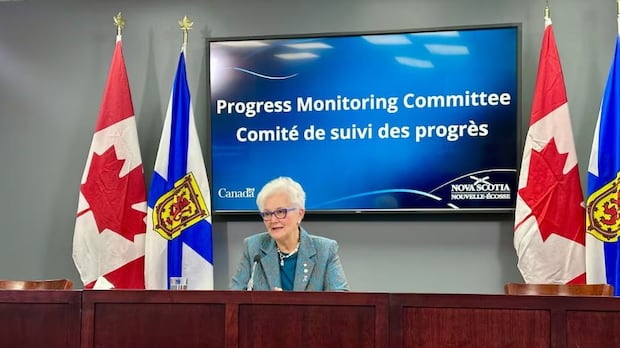N.S. environment minister says silence on Coastal Protection Act survey speaks volumes

Nova Scotia Environment Minister Tim Halman says he knows what almost 39,000 people think about the Coastal Protection Act, even if they didn’t take the time to tell him.
Last month, Halman revealed that only 1,070 coastal property owners responded to a survey mailed to 40,000 people asking for their thoughts on the legislation. Although Halman has said that most of the people who did respond favoured proclaiming the act, the minister told reporters on Wednesday that he knows what the others thought, too.
“I interpret that vacuum, that gap as [people saying] ‘Leave us alone. This isn’t something that we’re interested in,'” he said at Province House.
Halman said he was able to make that determination based on his professional experience.
“I’m the minister and this is a file I’ve been working on [for] almost three years.”
The Coastal Protection Act, which outlines where and how people can build along the coast in order to protect them from the effects of climate change, was passed in 2019 with all-party support and underwent two rounds of public consultation before Halman ordered a third round last fall.
But last month, Halman said the government would not proceed with the act. Instead, it released a website showing people where high water marks will be in the year 2100 along with educational information about coastal development. The province says it will help municipalities that want to develop their own rules governing development along coastlines.
All publicly available evidence, including documents released through access to information laws and public comments from municipal officials, have heavily favoured proclamation of the act.
But Halman said that’s not how he sees it.
“I think in its totality, you can conclude that there’s no clear consensus on that act.”

Halman said he’s relying on input from other Tory MLAs to back up his view that many people did not want the act proclaimed.
NDP Leader Claudia Chender said the absence of legislative action by the government means inappropriate coastal development will continue.
“To us, this is evidence of failure,” she told reporters.
Private versus collective issue
Chender said the situation is an ideological disagreement, with Halman and Premier Tim Houston saying that what people do with their waterfront property is a personal issue, while the NDP sees it as “a collective issue.”
“How do we as Nova Scotians protect our coastline and remain climate resilient?”
Premier Tim Houston said he has faith that people, when provided with the information about sustainable development, will make the right choices on their own.
“When you start, as a government, dictating what people can do on their property and what they can’t, it’s very serious stuff and we treat it as such.”
Halman would not say when he would release the results of the latest consultation for which the government budgeted $100,000. He also would not pledge to release the information before the conclusion of the spring legislative session at Province House.
Liberal Leader Zach Churchill accused Halman of hiding the survey results because he doesn’t like what they say.
“What’s in there that they don’t want the public to know?”
MORE TOP STORIES




